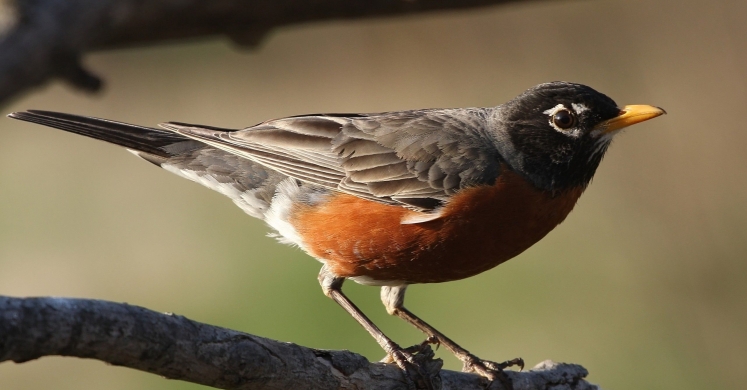Blog

#bioPGH Blog: American Robins
 A resource of Biophilia: Pittsburgh, #bioPGH is a weekly blog and social media series that aims to encourage both children and adults to reconnect with nature and enjoy what each of our distinctive seasons has to offer. From the best times to plant seasonal flora and enjoy their peak blooms, to astronomical events and creatures to keep an eye and ear out for, Phipps will keep you in the know with what’s going on in our environment!
A resource of Biophilia: Pittsburgh, #bioPGH is a weekly blog and social media series that aims to encourage both children and adults to reconnect with nature and enjoy what each of our distinctive seasons has to offer. From the best times to plant seasonal flora and enjoy their peak blooms, to astronomical events and creatures to keep an eye and ear out for, Phipps will keep you in the know with what’s going on in our environment!
You may have noticed a little more commotion across the city as another early indicator of spring, and the warmer temperatures to come, has begun to make its presence known — the American robin (Turdus migratorius). Flocks of these rust and charcoal colored birds, some of which having just returned from their winter homes in the south, can be seen congregating and foraging under trees and bushes that still bear fruit from earlier in the fall. But did you know that not all robins fly south for the winter? South of Canada, most American robins can be found year-round, though in the colder months they are more likely to be roosting and less visible. American robins also happen to be rather versatile creatures and will adjust their diets according to available food sources; taking advantage of bird feeders and fruits that remain on trees and shrubs throughout the winter, and then returning to their diet of protein rich invertebrates as the weather begins to warm throughout the spring and summer. The American robin’s versatility also allows it to inhabit varying environments across a vast range. These birds can be found in cities, suburbs, farmlands and open areas across North America, with their distributions spanning from coast to coast and as far south as Mexico and as far north as Alaska!
Connecting to the Outdoors Tip: Since these birds inhabit such a vast area and partake in annually predictable migrations, they are an ideal species for scientists to track and observe. You might be wondering what new and exciting information scientists can obtain from robins, but did you know that with the help of citizen reports of robin sightings, locations of hearing calls/songs, and nest spotting scientists are able learn more about this bird’s ecology, habitat, migratory routes, life cycle, conservation needs and even climate change? Utilizing the wildlife migration tracker Journey North, anyone can help increase our knowledge of these birds and their environment by simply reporting robin sightings and songs online to scientists. If you’re considering embarking on some bird watching of your own consider visiting eBird, a website maintained by the Audubon Society and Cornell Lab of Ornithology, to gain some helpful bird watching and counting tips. Even try coaxing the birds your way with some seed and one of the many bird calling apps for smartphones. If you have little ones that might not yet have the patience for bird watching consider crafting some fingerprint robins to get them excited about springtime!
Continue the Conversation: Share your nature discoveries with our community by posting to Twitter and Instagram with hashtag #bioPGH, and R.S.V.P. to attend our next Biophilia: Pittsburgh meeting.
Additional Resources:
American Robin - The Cornell Lab of Ornithology
Journey North
Seeing Robins? Let Us Know! - Journey North
Birding and Bird Counting - eBird
Robins, Bluebirds and Fingerprints - Francesca Kay
